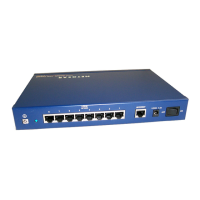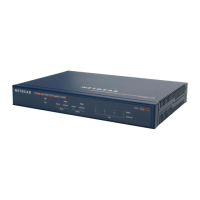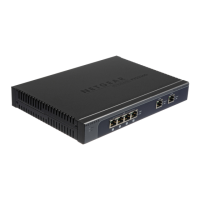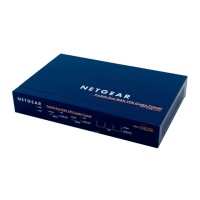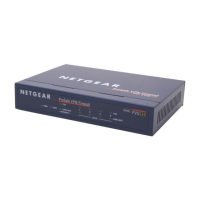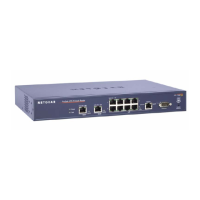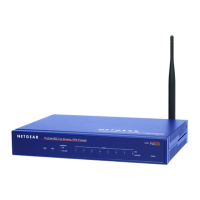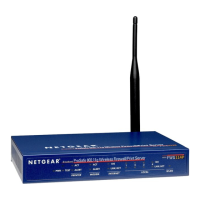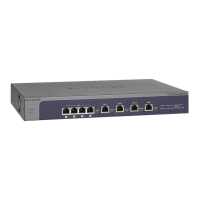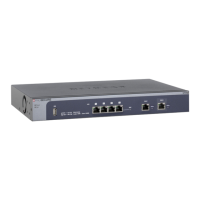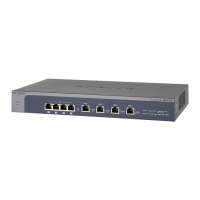Virtual Private Networking Using IPv4 IPSec and L2TP Connections
204
ProSafe Wireless-N 8-Port Gigabit VPN Firewall FVS318N
Note: The IKE policy settings that are explained in the following table are
specifically for a Mode Config configuration.
Table 44 on page 183
explains the general IKE policy settings.
Table 50. Add IKE Policy screen settings for a Mode Config configuration
Setting Description
Mode Config Record
Do you want to use
Mod
e Config Record?
Select the Yes radio button.
Note: Because Mode Config functions only in Aggressive mode, selecting the Yes
radio button sets the tunnel exchange mode to Aggressive mode. Mode Config
also requires that both the local and remote endpoints are defined by their FQDNs.
Select Mode
Co
nfig Record
From the drop-down list, select the Mode Config record that
you created in step 4 on page 202. This example uses NA
Sales.
General
Policy Name A descriptive name of the IKE policy for id
entification and management purposes.
This example uses ModeConfigNA_Sales.
Note: The name is not supplied to the remote VPN endpoint.
Direction / Type Responder is automatically selected when you select the Mode Config record in
the Mode
Config Record section of the screen. This ensures that the wireless VPN
firewall responds to an IKE request from the remote endpoint but does not initiate
one.
Exchange Mode Aggressive mode is automatically selected whe
n you select the Mode Config
record in the Mode Config Record section of the screen.
Local
Identifier Type From the drop-down list, select FQ
DN.
Note: Mode Config requires that the wireless VPN firewall (that is, the local
en
dpoint) is defined by an FQDN.
Identifier Enter an FQDN for the wireless VPN firewall. This example
uses router
.com.
Remote
Identifier Type From the drop-down list, select FQ
DN.
Note: Mode Config requires that the remote endpoint is defined by an FQDN.
Identifier Enter the FQDN for the remote end
point. This needs to be an
FQDN that is not used in any other IKE policy. This example
uses client.com.
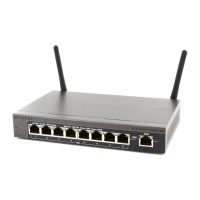
